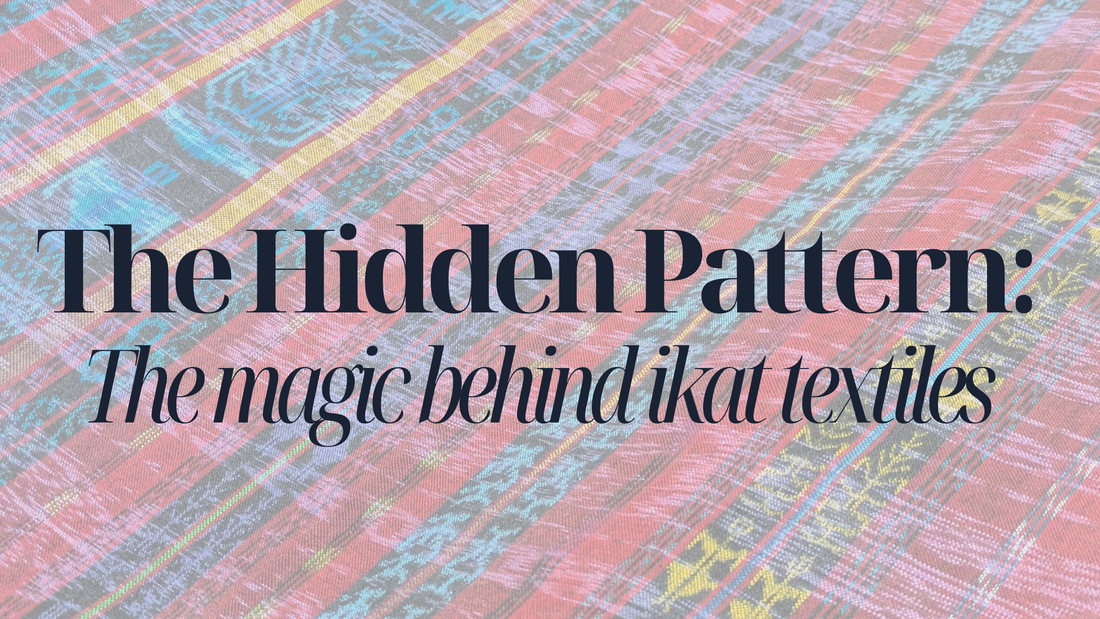
The Hidden Pattern: The Magic Behind Ikat Textiles
Imagine a puzzle that doesn’t reveal its image until the final piece clicks into place. This week, in our series celebrating global textile traditions, we’re discussing a process that feels a lot like that puzzle: ikat. If you’re wondering, what in the world is that? You are in the right place!

An Ancient Process
Ikat, pronounced ee-kaht, is an ancient dyeing process. What makes ikat so different from many other practices is that it’s done before the fabric is woven.
Unlike block printing, where the design is added to the finished fabric, ikat involves tie-dying the pattern into each strand of yarn before the fabric is made. Once the yarn is woven into a textile, the pattern will show. This process of keeping dye off of specific sections is known as resist dyeing. It might seem impossible. If the pattern isn’t there yet, how do the artisans know how to dye it and what it will look like?
At the beginning of the process, the long yarn is pulled taut, and the desired image is sketched across the yarn. Bands are then placed where the desired pattern should be, and the yarn is dyed.
When the bands are removed, the pattern will begin to show. Once the yarn is woven together, the pattern first sketched on the yarn will be seen dyed and woven into the final product. The more intricate the design, the more bands applied and the more times dyed.
A Global Tradition
Ikat takes many forms around the world. Most popular in Southeast Asia, ikat is practiced in many regions around the world, each with its own motifs, techniques, and cultural meaning.
We were lucky to watch artisans practicing the method on our trip to Guatemala earlier this year. In Guatemala, the form is known as Jaspe. These images are from the workshop we visited.

Seeing the incredible detail and precision up close definitely puts into perspective just how much time and talent it takes. And this all happens before the fabric is even sewn into a garment. Overall, the production of an ikat fabric takes many days and many deeply trained people.
Warp, Weft, or Double Ikat
There are three variations of ikat: warp, weft, and double ikat. Warp is when only the vertical yarn (warp) is dyed using the ikat method, and the horizontal yarn (weft) is dyed one color.
Weft ikat is the opposite of warp, and double ikat is when both horizontal and vertical threads are dyed using the ikat method. Double ikat patterns tend to be incredibly complex.
No matter what method is used, ikat is known for its slightly "fuzzy" appearance. This occurs due to the nature of the pattern being woven together with dyed yarn. This look is what makes ikat so unique.
Tradition, Sustainability, and Craft
In many regions, natural dyes and hand-powered looms make the process of ikat more sustainable than industrial textile production. It is no surprise that ikat items come at a higher price, reflecting the skill, time, and tradition poured into the practice.
Ikat is a time-honored craft that spans centuries and continents. When you see fabrics made using ikat, remember the many hands that took part in dyeing each yarn, weaving them together, and sewing the final form. Explore many ikat items at Latitudes Fair Trade, like the Dana Top or Tranquil Blue Organic Cotton Pants, both handmade in India.
